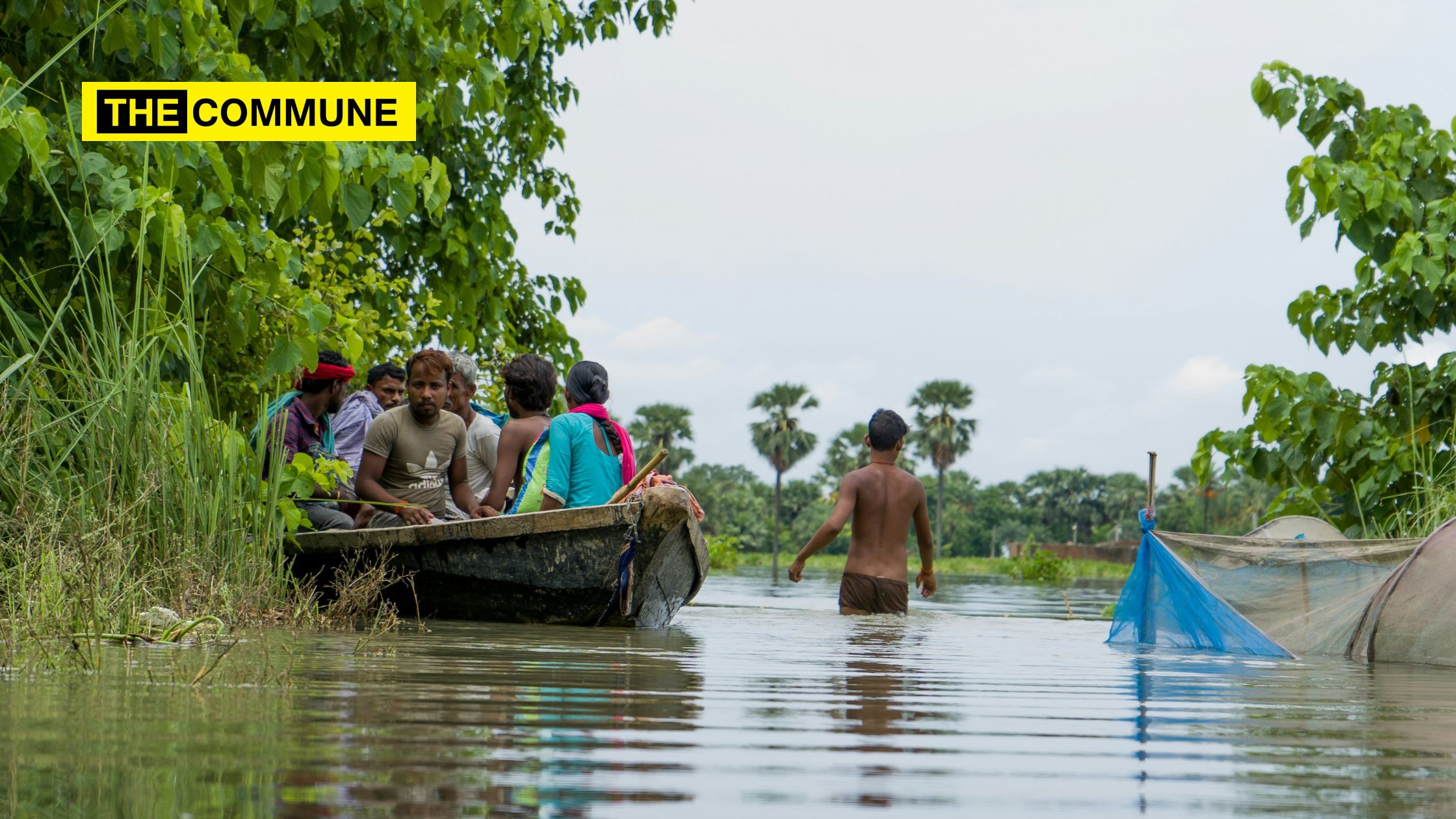
For long, India has suffered dearly from the vagaries of Mother Nature. In 2024, several parts of India, including Assam, Kerala, Himachal Pradesh, and Tripura, suffered severe socio-economic and ecological losses from floods caused by incessant rains. Even now, parts of India, particularly the western and southeastern regions such as Gujarat, Andhra Pradesh and Telangana, continue to reel under severe and widespread flooding, resulting in loss of lives, livelihood, and infrastructural damages.
With the number of natural calamities rising yearly, policymakers worldwide are considering financially viable alternative risk mitigation models that can lower the financial risk to the public purse and fund losses caused by such inevitable circumstances.
Risk Mitigation Models In Other Countries
Sovereign climate and disaster insurance has proved to be an efficient financial risk mitigation measure for climate adaptation among several economies.
Some well-known examples of such risk mitigation programmes are disaster pools set up under public-private partnerships, such as the South East Asian Disaster Risk Insurance Facility for flood risk and the Caribbean Catastrophe Risk Insurance Facility for tropical cyclones and earthquake-related risks (NIDM & III, 2021).
In the Philippines, the Government Service Insurance System Programme covers losses to national government assets from major typhoons and earthquakes on a parametric basis (UNICEF, 2023). The China Residential Earthquake Insurance Pool covers earthquake-related risks there. Meanwhile, Thailand’s National Catastrophe Insurance Fund covers damages caused by floods, earthquakes and windstorms (OECD, 2015).
The Caisse Centrale de Réassurance of France covers risks related to floods, earthquakes, tsunamis, landslides, mudslides, avalanches, subsidence, cyclonic winds, and terrorism (SBI, 2021).
Such models are typically developed after a detailed assessment of the extent of risk, targeted beneficiaries (covered under the risk mitigation programme) or priority areas, and the degree of protection.
Challenges In Developing Disaster Insurance Models
However, when it comes to developing and implementing a climate and disaster insurance programme, most developing economies and emerging markets face several challenges, such as low income and/or affordability, lack of trust in the insurer, unsupportive regulatory framework, and lack of political will (ADB, 2019). A long history of dependence on humanitarian assistance and social safety networks also lessens political initiatives to adopt a climate and disaster insurance programme.
Disaster Insurance In India
In India, sovereign-led insurance is not uncommon. India has several globally acknowledged prime climate change adaptation strategies for the agriculture sector, such as the Pradhan Mantri Fasal Bima Yojana, the Weather Based Crop Insurance Scheme, and the Coconut Palm Insurance Scheme. However, India does not have a natural calamities-related insurance programme.
Natural calamities such as floods hamper the economy’s long-term development goals as large chunks of funds are diverted towards relief and rehabilitation of affected areas. A research report published by the State Bank of India in 2023 suggested that the estimated economic loss due to floods in India ranges somewhere between INR 10,000 crore and INR 15000 crores, of which only around eight per cent was covered by insurance. In India, funds are allocated beforehand to counter natural disasters.
Based on the recommendation of the 15th Finance Commission, the Government of India has allocated INR 68,463 crore to the National Disaster Relief Management Fund (NDRMF) and INR 1,60,153 crore to the State Disaster Relief Management Fund (SDRMF) for the period 2021-22 to 2025-26.
In both funds, 80 per cent of the allocation is for disaster response, and the remaining 20 per cent is for disaster mitigation. The total fund released from the combined accounts of SDRMF and NDRMF in FY 2023-24 was INR 20,288.74 crore.
This year, the loss in Andhra Pradesh due to floods is estimated to be INR 6,880 crores, whereas the corresponding figures for Telangana are estimated to be INR 10,300 crore. With Gujarat, Tripura, Kerala, Assam, and other flood-affected states combined, this year’s total loss is expected to surpass last year’s losses.
Time For A New Framework?
With increasing calamities such as floods, cyclones and incessant rainfall in India every year, policymakers must think beyond existing disaster funds and develop an alternative risk mitigation framework, possibly through the PPP model.
Such models can be created after assessing the extent of risk in focussed areas and vulnerable groups in society. Developing a financial risk mitigation model for weather catastrophes would be a step towards climate change adaptation initiatives and achieving India’s net zero carbon emission target by 2070.
Ideally, policymakers should consider a financial risk mitigation model in which most humanitarian relief for catastrophe-affected lives comes from disaster relief funds while the insurance programme covers economic losses. To start, the government may consider allocating a portion of the 20 per cent allotment towards risk mitigation funds in the NDRMF and SDRMFs to develop such a programme. It must be reiterated that developing a disaster risk mitigation strategy is not to replace the current arrangements but to complement the existing ones by taking the bulk of their load.
Options Ahead
One option for India to develop such a model is establishing an ex-ante market-based risk transfer instrument, also known as a parametric index-based insurance model. Unlike traditional insurance, the parametric index-based insurance model doesn’t rely on individual loss assessment. Instead, settlement is linked to specific weather or geological indices, like average rainfall, temperature, or the strength of an earthquake or storm. It is determined by the correlation between the event’s intensity and expected losses.
Payouts from such models are usually faster compared to centrally controlled funds. However, parametric index-based insurance models are not without challenges. The major challenge in such a model is “basis risk,” which is triggered if a specified parameter or a particular threshold in the index is not met during a disaster. In this case, the insurer would refuse an insurance payout or only pay a part of the amount.
Several pilots have been carried out in the last few years by different entities such as the State Government of Nagaland through its SDMA (2021-2023), independent groups such as the Self-Employed Women’s Association (SEWA) in Maharashtra, Rajasthan, and Gujarat; and the Kerala Co-operative Milk Marketing Federation. The Nagaland model undertook its first pilot in 2021 but was largely unsuccessful, as the initial risk assessment was undertaken based on old data. Nonetheless, since then, the State Government of Nagaland has done extensive groundwork and is preparing for a second pilot. Taking a cue from Nagaland, Indian policymakers should encourage similar pilots in other states to understand the viability of such a strategy and its challenges so that a customised plan can be developed.
Another option for policymakers would be to develop a regional catastrophe pool for states facing similar kinds of calamities every year. For example, both Andhra Pradesh and Odissa are affected by storms and cyclones yearly, and most of the North East Region (NER) is affected by heavy rainfall and floods. At the same time, landslides and river flooding have become common in Himachal Pradesh and Uttarakhand lately. Such states facing risks from similar disasters could pool resources per the quantum of risk, retain some risk, and transfer the rest of the risk to insurance companies.
This option would allow for risk diversification and a more extensive risk cover at better rates, attracting more insurance companies. Participating states can standardise their contingency plans by establishing regional risk pools, leading to better post-disaster response and accountability. This approach also encourages fiscal responsibility and operational discipline, as funds for recovery are released based on a consistent, rule-driven framework.
Conclusion
Following either strategy would require the government to undertake thorough groundwork, update granular data on weather and geographic conditions, and use a scientific method to underwrite risk and estimate loss from a catastrophe for geography. Most importantly, this would ensure better coordination between the Centre and states, which can only be achieved through a political willingness to think outside the box.
Arindam Goswami and Nirupama Soundararajan, co-founders and partners at Policy Consensus Centre, New Delhi wrote this article.
Subscribe to our Telegram, WhatsApp, and Instagram channels and get the best stories of the day delivered instantly.




